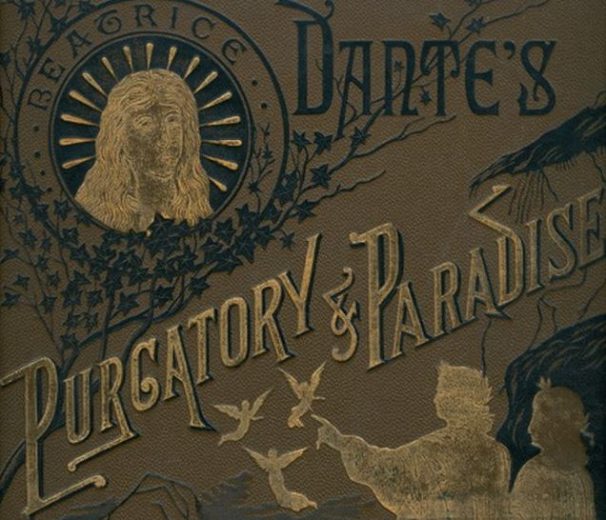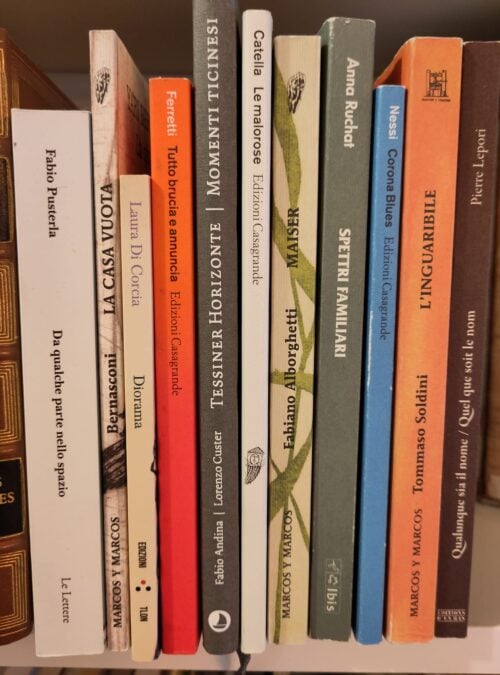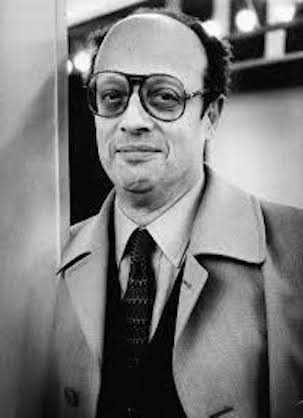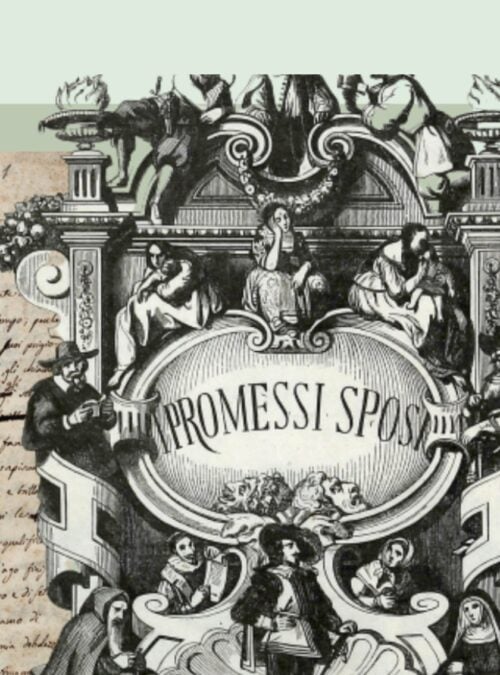Is Italian literature becoming more international?

by Laura Pugno for https://italiana.esteri.it/italiana/
1. Is Italian literature becoming more international? If so, in what way, and with what consequences? If not, for what reasons? Whether we read this as a question about the growing popularity of Italian books abroad, or interpret it in terms of literary identity, in the age of globalization and digitization, and in view of the international events of the Salon du Livre in Paris and the Buchmesse in Frankfurt that await our publishing industry in 2023 and 2024 respectively, this is certainly a question to be asked, neutrally and objectively, respecting all points of view. It is also a question for those who work with Italian books on a daily basis: Italian booksellers, here in Germany, France and Italy, but also writers and language historians.
Thus this article was born. In this first part, the following people respond: from Germany, and more specifically from Munich, Elisabetta Cavani from the Ital Libri Italian Bookshop, a very dynamic business that has existed since 1990 and has also been running the ILFest literary festival for some years now; and from France, Cristiano Pelagatti, president of the Lucciola Vagabonda bookshop association, which runs numerous events with Italian guest authors and collaborates with the Le printemps italien and Italissimo festivals in Lyon. Elisabetta Cavani was the first to respond, framing the issue from multiple points of view: “Is Italian literature becoming more international? It depends on what we mean. If the question is whether more Italian literature is translated, as far as the German-speaking market is concerned, I would not say so… It is true that new Italian novels are being translated more quickly than in the past, including authors from the latest generation, not only novels but also graphic novels, essays not only on art and history but also popular science. However, despite the work of independent publishers such as Folio or Wagenbach, or small intrepid newcomers such as Nonsoloverlag or Edition Converso, there is still a need for more translations and more opportunities for visibility, supporting and developing initiatives such as the various Italian literature festivals that are springing up around the world, as well as in Paris, London, Munich, Boston, Toronto and now Vienna, perhaps by combining them with a sort of Italian Book Fair. It also depends on what is being translated – for women writers there is a race to find a new Ferrante, even in reviving authors of the past such as Alba De Cespedes… Then, after the fall of the Wall, Berlin and Germany became a destination for travel and experience, not only for emigration, and the greater mobility of the latest generation of authors is also reflected in their works. There are also authors like Luca di Fulvio or Francesca Melandri who are more successful in Germany because the audience is more familiar with their themes or the genre. In addition, in recent years I have noticed a number of Italian novels set in Germany with German protagonists or in any case linked to German history, by authors such as Rosella Postorino, Helena Janeczek, Giuseppe Culicchia, and now Maddalena Fingerle, although there are not as many as German novels set in Italy… Finally, if we ask ourselves whether Italian authors have become more exportable due to a writing style more akin to series, more filmable, then probably yes. On the other hand, there are exceptions where the language is challenging to translate, such as Remo Rapino, Vita di Bonfiglio Liborio, which is now being published in German by the Swiss publisher Kein&Aber.”
Answering the question that this article attempts to ask about the internationalization of Italian literature is, as Cristiano Pelagatti points out, to attempt “a synthesis of an immense theme”. And yet, even if “there are many elements that have made today’s Italian literature ‘international’, there is one word that could sum them up, and that is ‘engagement’, the choice of a social and political realism, of a reflection on history, on ordinary and daily life and on the breakdown of traditional models“. So what are the direct consequences of the foreign proliferation of an Italian literature that we could once again call “committed”, albeit in a completely new way compared to a few decades ago? According to Cristiano Pelagatti, we are faced with “the progressive affirmation of a non ‘fictionnelle’ narration, strongly fed by the socio-cultural reality of the present. We could speak of hybrid narrative, of a ‘new’ realism that combines the liveliness of an almost journalistic style with the classical techniques of the novel. ” The first part of this article ends here. In the next instalment, we will shift perspective and look for answers from booksellers in Italy.
2. Our article on the internationalization of Italian literature continues. After hearing the opinions of Elisabetta Cavani of the Italian Ital Libri bookshop in Munich and Cristiano Pelagatti, president of the Lucciola Vagabonda bookshop association in Lyon, we now return to Italy. Let’s hear from Fabrizio Lombardo, operations director of Librerie Coop, and poet. To the question Is Italian literature becoming more international? If so, in what way, and with what consequences? If not, for what reasons?, Fabrizio Lombardo replies: “It seems to me that a transformation is actually taking place, which is leading Italian literature, or perhaps I should say Italian publishing, to be more international. There is no doubt that this is happening against a background of standardization, of homologation, with respect to literary models tied more to the market than to actual quality and research, far removed from the cultural models that made Italian literature memorable and historically imitable (I am thinking of the likes of Calvino and Eco). In my opinion, this transformation is made easier and faster thanks to the circulation that takes place through social channels, instant communication, the possibility of reading and replicating, even without translation, content from abroad, becoming part of cultural and emotional trends that involve the public worldwide. In addition to this, which is the historical backdrop to all contemporary activities, there are also a number of aspects within the sector that in recent years have made the ground fertile and suitable for a change that first affected the Italian market and then reverberated worldwide. It is clear that the way the market has moved and evolved in recent years, taking book sales in a more horizontal direction, with new titles that have little staying power and shelf life, while the catalogue and the long line of titles promoted by word-of-mouth and social media are the stars, has prompted considerations that were previously less prevalent, and has upset the editorial balance that had been consolidated and perhaps a little jammed. While on the one hand, we have seen a process that has led to a growth in production and visibility, also in terms of sales, of independent publishers, who have been a great training ground, a source of new voices and of generational change, on the other hand, large publishing groups have slowly but surely moved towards seeking out these authors and taking them under their wing. (Hence also the standardization risk). On the whole, this phenomenon changed the focus of big publishers’ catalogues, making them dynamic and more interesting, even for a foreign market, while leaving room in bookshops for new voices arriving from medium-sized independent publishers, thus broadening the reading spectrum for the wider public. This is the other aspect to be analysed, related to the growth of the market, of the public. A phenomenon that has come about thanks to the tremendous work done by both independent and chain bookshops (in different ways, but on closer inspection, in harmony) but also thanks to the enormous growth of the online market, and, in parallel, thanks to what has been done by the government to support publishing and bookshops but also to promote reading in recent years and specifically in the two years of the pandemic. All of this, on the whole, has set the Italian publishing industry in motion, which had been at a standstill for a long time, and has made it more dynamic in terms of the market, the public, and production, and I believe that this dynamism has also been rewarded at international and European level. Proof of this are the invitations to Italy to be the host country, in the coming years, at the Paris Book Fair in 2023, and at the Frankfurt Book Fair in 2024. A special mention must be made of children’s publishing, which has always been a step ahead of the rest of the sector, always internationally admired and respected, certainly also thanks to the great research and promotion efforts that the Bologna Children’s Book Fair has been making for almost sixty years“. It is interesting to see how in some ways the critical voice of Fabio Masi, independent bookseller and creator of the Ultima Spiaggia bookshop on the island of Ventotene and in Camogli, who recently received the “Silvana e Luciano Mauri” Prize for booksellers from the Umberto ed Elisabetta Mauri School for Booksellers, agrees with Fabrizio Lombardo’s conclusions. Fabio Masi answers our question: “I believe that even in literature there is a certain homologation to the ‘easier’ international standards, with writing that tends more towards editorial success than research and the desire to establish itself through alternative and original paths. The era in which we live has a profound impact on the imagination of writers and the choices of publishers and readers, flattening diversity and making the path of those who want to try to innovate more difficult. In my opinion, there is a lack of space and resources to support new and different voices in literature, starting with a new and widespread network of independent bookshops in Italy. The only exception seems to be children’s publishing.”
3. In the second part of this article, which seeks to answer, neutrally and objectively, the question Is Italian literature becoming more international? If so, in what way, and with what consequences? If not, for what reasons? Fabrizio Lombardo, operations director of Librerie Coop, and Fabio Masi, an independent bookseller in Ventotene and Camogli, gave an honourable mention to children’s literature. In the first part, Elisabetta Cavani, an Italian bookseller in Munich, underlined the growing presence of translated Italian popular science books in bookshops. At this point, we think it would be interesting to explore the point of view of Roman bookseller Silvia Dionisi, who not only owns the independent bookshop L’altracittà on Via Pavia with Andrea Petrini, but has also recently become – during the pandemic – a publisher under the brand name L’Altracittà Media e Arti, making her debut on the shelves with “Zelda Mezzacoda” by journalist Filippo Golia, illustrated by Valentina Marino. Silvia Dionisi answers our question: “I do not think that the writings of Italian authors are becoming more international. Relating what I observe in the bookshop on a daily basis. It seems to me that Italian publishers prefer to publish foreign authors, continuously concentrating on a few strong names that are easily exportable because they are ‘strongly’ Italian. A few keywords come to mind. The word territory. Generally speaking, it seems like a good time for books that have a clear geographic setting. This is especially true in crime-noir writing, or in reconstructions of family sagas. I. These ‘borders’ tell of a more or less ideal Italy and in my opinion easily exportable. They create an authentic or plausible landscape that reflects the image they have of Italy abroad. Hence the cases of Andrea Camilleri and Elena Ferrante. A second keyword could be image. It is the titles and authors who are making TV series or films that are attracting attention. Translating words into images is certainly a means of breaking down territorial boundaries. The recent case of Zerocalcare. And again Elena Ferrante and Andrea Camilleri (whose sales, however, seem to have slowed down). Readers also prefer to read foreign authors, it is a way of getting to know what is elsewhere. Our bookshop is also lucky enough to welcome a number of foreign readers living in Italy for study, research or professional reasons, most of whom are French-speaking. They are passionate about authors who have become classics of our literature. Elsa Morante, Umberto Eco, Italo Calvino, Pasolini, and they still appreciate the commitment of Erri de Luca, Roberto Saviano”. Thus, Silvia Dionisi returns to the theme of commitment that we had already heard from Cristiano Pelagatti, an Italian bookseller in Lyon. “Paradoxically”, continues Silvia Dionisi, “the strength of Italian writing that can be exported abroad lies in the emphasis placed on Italianness. It seems to me that Italian voices are becoming more international, even emphasizing the territorial and typical Italian character. The Italy brand makes it international, in market terms.” And what about children’s publishing? “A world apart”, concludes Dionisi. “I have a feeling that publishers are mainly dedicated to translating great international authors. However, distinctions by age group should be made. In my experience with the 0-6 and 7-10 age group, there are sporadic cases of Italian authors crossing our borders. At other times, Italian authors make a name for themselves abroad before they do so in Italy. Special mention should be made of Italian illustrators who are highly appreciated and recognized abroad. Italy receives many awards especially for the quality of the product produced, for the editorial workmanship. In other words, creativity and a sense of beauty are one of our country’s strengths, also when it comes to children’s books. And that’s what makes them international: not because they can be translated abroad because they are beautiful to look at and to own.” We will end this third instalment on the internationalization of Italian literature with a reflection to the contrary, on the yeasts and enzymes that are introduced into the Italian literary and publishing system thanks to the work of independent and non-independent publishing houses and translators, by questioning another Roman bookseller, Nicoletta Frasca of the Libreria Tomo, in the university district of San Lorenzo, which has traditionally been focused on the scientific world – as Elisabetta Cavani said – also facilitated by the presence of the nearby university, Sapienza University of Rome: “My point of view is as a manager of a medium-sized independent Roman neighbourhood bookshop. We have noticed a certain commitment from Italian independent publishers to seek out, then translate and publish in Italy, experimental mixtures of different literary genres. We have seen essays on the environment mixed with adventure novels, such as Donna vuol dire natura selvaggia, published by Edizioni di Atlantide. We have seen detective stories mixed with noir, with autofiction, and there has also been interest in fiction from countries previously little studied. Thanks to the work of some publishing houses, such as Keller or Sellerio, the whole Eastern European area, for example, is finding greater visibility in Italy. As for popular science fiction, on the other hand, I can say that, in line with the path that has emerged over the last two years at least, between new editorial proposals on the one hand and readers’ demands on the other, we have come to the decision to include two new sectors in the bookshops, which we have named: Ecology and Rights. In this way, we were able to give space to all the publications on environmental issues and the most up-to-date non-fiction on feminism, racism, and in general on all the human rights still denied.
4. This fourth instalment concludes our article, which attempts to answer the following question neutrally and objectively: Is Italian literature becoming more international? If so, in what way, and with what consequences? If not, for what reasons? After having interviewed Italian booksellers in Italy, France and Germany, we will now shift perspective by questioning two Italian language scholars who are also authors in their own right: Francesca Serafini, who is also a screenwriter for films and TV series, and Leonardo G. Luccone, writer, editor and founder of Studio Oblique.
Both were asked Is Italian literature becoming more international? And if so, what does it mean, and what does it entail? For Leonardo G. Luccone, the analysis leads to a harsh critique: “There is undoubtedly a knock-on effect due to the Ferrante phenomenon and also to the success of some TV series conceived and shot in Italy. Another positive aspect is the availability of funding – still scarce – to translate our authors abroad. What does it entail? Unfortunately, the proliferation of clones: books built to fit into a given trend. All this would be quite normal (it has always been this way, and it is typical of the market) if it did not also affect independent publishers or the most pro-literary part of the big publishers. In short, I see more standardization and less courage: in the narrative structures, in the style, in the covers, in the paratexts. It is the Great Ombudsman that mixes tastes and ambitions and narrows the range of proposals, cutting out the extremes, of course”. For Francesca Serafini, “I don’t know how to compare with the past (more international than when?). But Ithink it is a good sign in this sense that no more than four years ago the Strega Prize was awarded to an author like Helena Janeczek whose works have an international outlook and setting. It is also a good sign that authors such as Anilda Ibrahimi or Jhumpa Lahiri have chosen to write in Italian. Openness and fusion seem to me to be the way to go, even linguistically, in the search for something new and artistically relevant”. In addition to this question, we have added another, more technical one, for both sides, i.e., do you feel that a change in an international sense is also underway with regard to syntax and punctuation, ‘the nervous system of language’, or possibly other aspects of the stylistic and literary system of Italian, even beyond the more obvious changes that may affect the lexicon? Leonardo Luccone answers: “There are many concomitant phenomena. I would like to at least mention the following dominant phenomena here: the impact of the language of translations on writing. By dint of reading translations that are on average poorly edited (and here we open a huge chapter on the appreciation of this profession), language is becoming bastardized; it introjects morpho-syntactic forms typical of English and casts them on our language, giving rise to horrifying plasticky locutions, which nevertheless have an enormous power of diffusion (“ho approcciato”, “assolutamente”, “ho estremamente bisogno di sentirti, puoi capirlo?”). Linked to this is the generalized use of English terms, especially in technical or vaguely technical fields. Secondly, the impoverishment of syntax: texts are increasingly paratactic, with the use of the interpunctorial palette reduced to a minimum; in practice, only the full stop and the comma. In truth, it is not just a matter of punctuation, but of morphosyntactic, lexical and semantic narrowness. Writing from a source has become a muffled tube sending back a kind of Morse code.” Francesca Serafini answers the same question: “There are – it must be said – many notable exceptions (from Nicola Lagioia to Simona Vinci, to mention at least two names): authors who work on their texts looking for a syntactically articulated and personal voice; however, it seems to me that there is a tendency towards simplification, to fragmentation of the text, which is more in line with the taste of the editors than that of the authors, and which is reaching the level of the Italian of the most aseptic translations. Then, of course, there is not just one school of thought in editing, nor in translations, not least because, as Benjamin writes, there is no such thing as man in general. Fortunately.”
At the end of this long review, which has brought together very different points of view, both constructive and critical, fortunately our question will not have had a single answer, but certainly the contours of the question will have become much more precise, and this will perhaps help us to ask ourselves and others better questions in the future.










